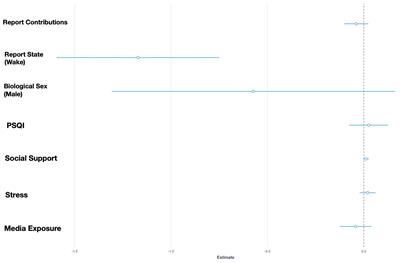Dreaming during the COVID-19 pandemic: Support for the threat simulation function of dreams
Evolutionary theories suggest that dreams function as a world simulator of events that maximizes our ability to surmount social and threat-related challenges critical to survivorship and reproduction.

Here, in contrast to the incorporation continuity hypothesis, we test the (1) social bias hypothesis, which states that dreams will overrepresent positive social interactions relative to waking life, (2) the mutually exclusive threat bias hypothesis, the idea that dream content will be negative relative to waking life, (3) the strengthening hypothesis, which states that dreams will rehearse more positive interactions with individuals the self is familiar with relative to waking life, and (4) the compensation hypothesis, which states that social contents in dreams increases during periods of social seclusion. Dream (n = 168) and wake (n = 184) reports were collected through a standardized online survey from 24 undergraduate students. Recalls were analyzed using the Social Content Scale. Generalized linear mixed effects models were used, and the following fixed-effects were considered for the study; the number of reports contributed, report state, biological sex, stress, social support, and media exposures. Results showed support for the threat bias hypothesis, we found that dreams were more negative and featured more unfamiliar individuals in contrast to waking life. Additionally, we found partial support for the social bias and the strengthening hypotheses, however no support was shown for the compensation hypothesis. Overall, these results demonstrate support for the threat simulation function of dreams..
Read the full article at the original website
References:
